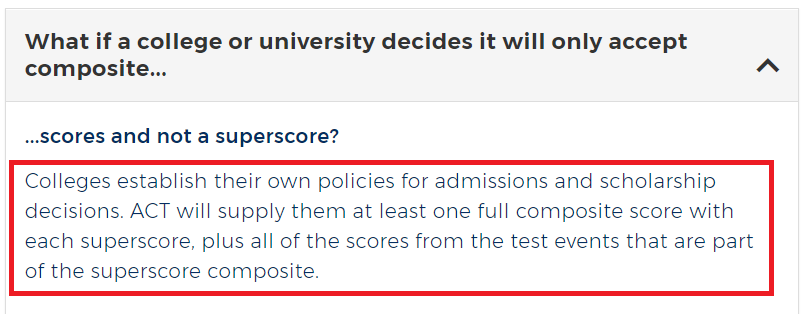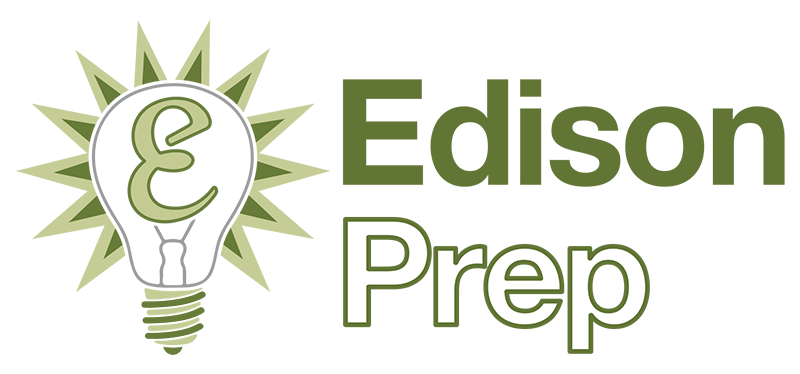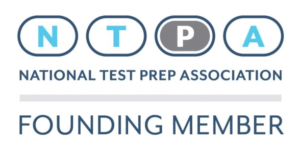The ACT Announces Growth in Online Testing Options, Individual Section Re-Testing, and Updated Superscoring Infrastructure
This morning, we woke up to over 45 parents and college counselors texting us articles about the ACT’s press release regarding some changes as it relates to superscoring, the ability to re-take just certain sections of a test, and the bigger push to allow students to take the ACT online (on a computer) at a test site beginning in Sept. 2020. As full-time professionals in the trenches of the ACT, we have opinions, and, unsurprisingly, what you read in the press release is what the ACT would like you to take away. At first glance, these three combined announcements seem to overwhelmingly favor students.
However, today’s press release is mostly one very positive note on superscoring mixed with a bevy of precautionary notes that are important for parents to understand about the online ACT and section re-testing.
Summary of Changes:
1) Students who have taken the test more than once will be provided with an ACT superscore on their actual score report. The good news in the press release is this single bullet point.
2) Students who have taken the full-length ACT before will be allowed to re-take just certain sections of the exam now…but only online, not on paper. Students must have already completed a full-length real ACT on an earlier exam date (paper or online format) to be eligible for section testing. Section retesting will also only be available on the “big seven” national test dates; it’s not available for state testing or school district testing. For reasons that will be explained below, that makes section retesting mostly a non-starter.
3) Students will be allowed to take the test online at limited test sites beginning in September 2020, with a further expansion at a later date. ACT exams taken via the online format will come back in two days, rather than 10 days for the current paper test. This digital format has existed in pilot form since 2015. The online version contains an identical number of questions, content, and timing. It will be conducted on secure school-administered computers at test sites.
Deep Analysis and Strategic Implications:
1) The decision to cleanly and simply include the superscore on the ACT score report is a huge win for students, families, and logic. Currently, only about 55-60% of major schools super-score the ACT, whereas 90%+ of schools superscore the SAT, an unfair difference in treatment that has never made sense. The ACT already encourages colleges to superscore the test (see link here), and a few more colleges begin superscoring the ACT each year. Families who currently spend lots of money during the application process in order to send scores from multiple ACT exam dates in order to get the benefit of superscoring may save meaningful money because of this change.
One note of caution: It remains to be seen if colleges and scholarship agencies that don’t wish to superscore will simply ignore the big shiny superscore that the new ACT score report will provide and simply use the single-day score instead. (Auburn, with your generous automatic ACT score cutoffs for scholarship dollars for us Georgians, we’re looking at you…) This very particular wording from the ACT FAQ is the one that makes us curious as to whether schools that currently don’t superscore the ACT will keep their current policy:

2) For as long as the paper-based test is allowed, students should stick with the paper test. The reasons are manifold:
A) Students do not adequately value how important being able to write and annotate directly on the paper test is. Students have a much harder time finishing the digital format of the ACT than the paper-based version. The ACT is a test for which the math, reading, and science sections are difficult to finish in time for most students. The online format makes it harder to leverage the pre-printed diagrams and tables on the Science section, the scratchwork and geometry diagrams on the math section, and the annotation of reading passages. All of this adds greatly to a student’s speed when taken on paper, and for the reading and science sections, almost every single extra question correct or incorrect is an entire point, so the implications are immediate and large. The parents we work with who have taken the GMAT or GRE in its online format understand how clunky and slow writing on a separate piece of paper and re-drawing geometry diagrams is. Furthermore, students retain information far better on paper than on a screen, as has been documented in numerous articles like this one.
B) Students who have previously taken the full-length ACT and wish to take advantage of the new feature of taking just certain sections of the test again rather than the whole test can only do so via the computer version. The time that students lose by taking it on a computer far outweighs any perceived stamina issues that a student may gain by being able to take just one or two sections while “fresh.” Short-sighted students may hastily try to save two hours and 15 minutes on a Saturday morning but spite their score in the process by doing the online format.

C) We have seen firsthand proof the damage that a digital ACT format can have on student scores relative to the same test given in paper format. There are one or two schools in Atlanta who, back in 2015, were oddly eager to make their entire student bodies digital guinea pigs. We worked with a number of those students whose schools recklessly mandated that they take the online format. Our sample size is not thousands, but our students from those schools had extreme problems finishing without being able to annotate like they were used to. At best, some matched their homework test scores. Most fell 2-4 points ACT relative to their most recent homework test the week before the exam. They all noted that the exam wasn’t harder, just that they had no chance of finishing like they did on their paper-based homework tests, which were all real, full-length national ACTs.
D) The online testing appeals far more to the ACT and to high school superintendents than high schoolers. Whenever an article regarding digital testing has come out from ACT over the last five years, in order to keep our pulse on the state of 16-year-olds, we’ve asked our students in class if they would like the idea of taking the online ACT with the exact same timing structure (no extra time given for the fact that you can’t write on the test). Like clockwork, over 90% said that losing the ability to write on the actual booklet would kill their timing (“especially math, omg can you imagine!”) and said paper was their preference. Sadly, some high school administrators who want to look like they’re “innovative” will likely push this new shiny object to students’ detriment.
Meanwhile, students who have good advising from their tutors and/or nerdy peers at high-performing high schools will likely stick with the paper format and avoid the digital score hit.
E) The biggest struggle will be parents and tutors getting students to understand that their desire for 2-day online test scoring (immediate gratification) instead of paper-based score results in 10 days is very much “haste makes waste.” The higher up the ACT score spectrum students get, especially in math, the greater the impact the inability to physically write in their test booklets will be. The paper vs. online disconnect will exist, but in a more muted way, in the 1-23 ACT score range, where students are already allowed to miss 75-80 questions and still earn a 23, and where a large part of the coaching is primarily “let’s work on being really accurate on 70% of questions you understand / can get to.”
F) There are no official online practice tests with the new format that simulate the look and feel of the application students will be logging into on test day. Students need to be able to play with the look and feel of the “ACT OS” from the very beginning of the prep. The online offerings that the ACT has produced thus far, such as their free online prep resource “ACT Academy,” have been widely ridiculed by educators across the spectrum. Check out some humorous annotated photos showing the ACT Academy’s shameful inadequacy here and here and here and here and here and here and here, courtesy of our tutor friend James Murphy.
G) IT issues and power outages will occur. We take the test each year, and have personally taken the SAT and ACT a combined 30+ times, and during two of those times, there have been brief power outages. Internet and power outage issues will be messy and impossible to avoid. This has been a common complaint by international students who were all forced onto the online format en masse last year (link).
H) Students win via “happy accidents.” Even if a student finds a test center that magically has digital test seats available for taking it on one section and somehow can overcome the speed challenges on digital vs. paper, students who retake the test while focusing on one section (e.g. math) often have “happy accidents” where they get points on the retest from areas they don’t expect when the pressure is off plus natural volatility on test day. Additionally, not all schools will even accept section re-tests (likely not even a majority). Thus, unless someone already has an oddball distribution like 36 English/28 Math/36 Reading/36 Science, taking the full-length test is smarter for most students.
3) It remains to be seen how much the high schools that host the test are even willing to put up with the added hassles of offering the online test. The ACT noted that the online format is initially only going to be available “at select sites” in Sept. 2020 and beyond. It’s hard enough to get high schools to even serve as hosts for the existing paper-and-pencil test centers, especially for the summer tests, so the number of high schools that will be eager to pony up computer labs as well is likely to be very tiny. Additionally, as we all know, computer labs at various high schools are not equally well-equipped (some will have old, obsolete machines), which would make jockeying for “better” test sites even more important. Finally, some of the larger ACT test sites currently have 200+ students taking the test on the same day. Do most high schools have computer lab / computer capacity of 200+? Most do not.
Conclusion:
To be clear, once the ACT goes digital-only – it will be forced on us eventually – we will adapt our book, our pedagogy, and our curriculum to adjust. We’re already the only SAT/ACT firm in Atlanta who revises its curriculum every year.
However, from a strategic standpoint, as long as both options remain available, savvy, well-advised families nationwide will stick to paper-and-pencil testing. The proof is already there in the data from the failed digital pilot students we’ve had since 2015, the 2018 international students who concur, and the common sense outlined above.
Sources and links:
1) http://leadershipblog.act.org/2019/10/act-test-to-provide-new-options.html
2) https://www.act.org/content/act/en/products-and-services/more-choices-for-the-act-sept-2020/faqs.html#section-retesting
3) https://www.act.org/content/act/en/products-and-services/more-choices-for-the-act-sept-2020/
Further reading:
https://www.nytimes.com/2019/10/08/us/act-test-superscore.html
https://www.compassprep.com/act-section-retesting/
https://www.insidehighered.com/quicktakes/2019/10/08/act-announces-scoring-reforms







